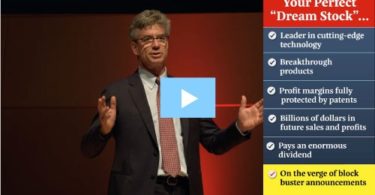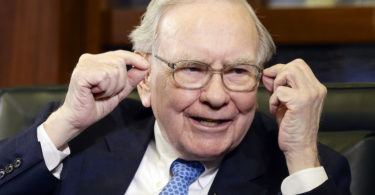Overview – A New Bipolar I Treatment Boosts Teva’s Prospects
Teva Pharmaceutical Industries (NYSE: TEVA) has scored a notable regulatory win with the FDA approving an expanded indication for UZEDY® (risperidone) – a once-monthly, long-acting injectable – as a maintenance treatment for adults with Bipolar I Disorder (BD-I) ([1]). UZEDY was previously approved (in 2023) for schizophrenia, and this new approval allows its use as a monotherapy or adjunct to lithium/valproate in BD-I ([1]). The product, developed with partner MedinCell, leverages a novel copolymer technology for steady risperidone release ([1]). This marks Teva’s ongoing push into innovative neuroscience drugs, highlighting a shift from its traditional generics focus. Investors have welcomed Teva’s pivot to branded therapies – the stock more than doubled in 2024 (up 111% from ~$10.67 to $22.04) after years of decline ([2]) ([2]). With UZEDY now addressing BD-I’s unmet needs, Teva gains a fresh avenue for growth in mental health treatments, complementing its other key branded drugs like Austedo and Ajovy ([3]).
Dividend Policy & History – Past Cuts and Current Status
Teva historically paid regular dividends but eliminated its payout amid a 2017 crisis. In 2017, Teva slashed its annual dividend by ~37%, down to $0.85 (from $1.36 in 2016) ([4]), and shortly thereafter suspended dividends entirely. As a result, Teva’s trailing 12-month dividend is $0.00 and its current yield stands at 0% ([5]). This halt was part of a restructuring to conserve cash and reduce debt. Notably, a recent tax settlement in Israel further deters shareholder payouts – if Teva resumes dividends or buybacks, it must pay an extra 5–7% tax on those distributions (up to ~$500 million) ([6]). This agreement (covering 2008–2020 taxes) means investors shouldn’t expect a dividend restoration in the near term, as Teva prioritizes strengthening its balance sheet. Instead of cash returns, management is focused on debt reduction and reinvestment to rebuild the business.
Leverage and Debt Maturities – Heavy Debt, But Manageable Schedule
Teva remains highly leveraged, a legacy of its 2016 Actavis generics acquisition. As of early 2024, net debt stood at $16.6 billion ([3]) – substantial relative to its ~$23 billion market cap. This debt load pushes Teva’s debt-to-(debt+equity) ratio to roughly 73% ([7]), underscoring a still-strained balance sheet. The good news is Teva has termed out much of its debt: only ~10% is due within one year ([7]), and the average maturity is ~6.2 years ([7]). In fact, Teva has proactively refinanced obligations – in May 2025 it issued ~$2.3 billion in new notes (including €1 billion of 2031 notes at 4.125% interest) to repurchase bonds coming due 2026–2029, easing near-term refinancing risk ([8]). Interest costs are still hefty (on the order of ~$900 million annually, about 6% of sales), but are largely covered by operating earnings. For 2024, Teva delivered adjusted EPS of $2.49 on $16.5 billion revenue ([9]), indicating solid cash generation to service debt. The company also plans to sell its Active Pharmaceutical Ingredients (API) division by 2025, which could bring in proceeds to further pare down debt ([3]). Overall, leverage remains a concern, but debt maturities look manageable and interest coverage is improving as Teva’s profitability rebounds.
Valuation and Comparative Metrics – “Value” Pharma Play
After a strong rally, TEVA stock trades around $20 per share, equating to roughly 8× forward earnings – a low multiple reflecting both its risks and turnaround potential. For 2025, management forecasts EPS of $2.35–$2.65 on $16.8–$17.4 billion in revenue ([9]). At the midpoint, that implies a forward P/E ~7.5–8×, a discount to broad pharma peers (which often trade in the mid-teens) due to Teva’s higher debt and past challenges. In terms of enterprise value, Teva’s EV/EBITDA also appears modest in the high-single digits, given net debt of ~$16–17 billion ([3]) and improving EBITDA from its branded-drug growth. Comparables in generics and specialty pharma, such as Viatris (VTRS) or Sandoz, likewise trade at depressed multiples – a sign that the generics industry’s low growth and legal overhangs weigh on valuations. Teva’s price-to-sales ratio is about 1.3× (market cap ~$23 B vs. $16.5 B sales) ([5]) ([5]), while its price-to-book is higher due to modest equity (goodwill write-downs and legal charges have shrunk book value). Notably, Teva’s stock is still far below its 2015 peak ( ~$67 ) ([2]), indicating substantial lost market value. The recent climb back into the $20s reflects cautious optimism – investors are starting to price in Teva’s stabilizing fundamentals and new drug pipeline, but valuation remains in “turnaround” territory until key risks fully abate.
Key Branded Products and Pipeline – Shifting away from Copaxone
Teva’s growth strategy hinges on a few core branded products offsetting declines in older franchises. Its largest new drug, Austedo (for Huntington’s disease and tardive dyskinesia), saw sales jump +27% in late 2024 ([9]), and is forecast to exceed $2 billion in 2025 revenue ([10]). Ajovy, a migraine injection, is growing over 30% YoY (projected ~$630+ million in 2025) ([10]). Now UZEDY – the long-acting risperidone injection – is emerging as a meaningful contributor: it reached $54 million in Q2 2025 sales and management raised its 2025 sales outlook for UZEDY to ~$190–200 million ([10]) even before the bipolar indication. This trio of products is gradually filling the gap left by Copaxone (an MS drug that lost exclusivity) and other legacy brands. Teva is also investing in biosimilars and specialty respiratory products (e.g. its ProAir inhalers), aiming to double biosimilar revenue by 2027 ([10]). Overall, the pipeline is focused on complex generics and innovative neurology/psychiatry therapies – a strategy to differentiate Teva from pure commodity generic players. The FDA’s approval for UZEDY in bipolar disorder underscores this approach, giving Teva a competitive entry in the BD-I long-acting antipsychotic market (an area historically led by J&J’s long-acting injectables). Execution on these growth drivers is critical – continued uptake of Austedo, Ajovy, UZEDY, and successful launches of pipeline products will determine if Teva can sustainably return to growth.
Risks and Challenges
Despite recent progress, Teva faces significant risks. Competition and pricing pressure in generics remain an ever-present challenge – U.S. generic drug prices have seen years of erosion, squeezing margins industry-wide. Teva’s base generics business (still ~$10 billion+ in sales) is relatively low-growth, and a sharper-than-expected decline could drag overall results. Another risk is pipeline execution: the company’s recovery depends on a handful of specialty drugs; any setback – for instance, safety issues, slower uptake, or new competitor entrants for Austedo or Ajovy – could hurt revenue and sentiment. Teva also operates under substantial legal and regulatory overhangs. The firm was a key defendant in U.S. opioid litigation and is now committed to a nationwide settlement totaling ~$4.25 billion over many years ([11]). While this largely resolves opioid claims, it requires Teva to supply addiction treatment drugs and cash installments, which will weigh on cash flows long-term. Similarly, Teva recently agreed to pay $450 million to settle U.S. DOJ allegations of price-fixing and kickbacks (related to its Copaxone marketing), avoiding potential liabilities of up to $10 billion ([12]). These settlements, along with ongoing product liability suits* or potential new claims, underscore a risk of extraordinary legal costs that could recur. Additionally, Teva is exposed to macro and geopolitical risks: as an Israeli-headquartered company, regional instability (e.g. conflict in 2023–2024) creates operational and currency uncertainties. Rising interest rates globally are another challenge – if inflation or rates stay high, refinancing debt will be costlier, pressuring future earnings. In short, Teva’s turnaround is not without hurdles: it must navigate competitive markets, deliver on drug launches, and manage legacy liabilities, all under the shadow of high debt.
Red Flags and Watchouts
A few red flags warrant investor caution. First, Teva’s leverage is still elevated – net debt/EBITDA remains high, and interest expenses near $1 billion/year mean less room for error in an economic downturn. The company’s equity base is thin (shareholders’ equity was only ~$7.7 billion mid-2023 ([7]) after years of impairments and legal charges). In fact, Teva posted a net loss of $1.1 billion in the first half of 2023 ([7]), reflecting charges for legal settlements – highlighting that one-off costs are still hitting its bottom line. These repeated special charges and goodwill write-downs raise concerns about the predictability of earnings quality. Another red flag is reputation and governance issues stemming from past misconduct. The price-fixing and kickback settlements indicate prior management’s compliance failures ([12]); while Teva did not admit wrongdoing, such cases underscore the importance of improved oversight to prevent future infractions. Investors will also keep an eye on pipeline transparency – Teva’s R&D productivity has been questioned after high-profile disappointments (e.g. past attempts in biosimilars and novel therapies). Any delay or failure in Teva’s limited late-stage pipeline could be painful. Lastly, no dividend despite improving profits could displease yield-focused investors – although rightly suspended, the absence of capital returns (and the added tax if they resume ([6])) is a drawback compared to some peers. These red flags suggest that, while Teva is on the mend, it still carries baggage requiring careful monitoring.
Outlook and Open Questions
Looking ahead, Teva’s investment thesis hinges on a successful turnaround of its core business and the resolution of legacy issues. Key open questions include: Can Teva sustain growth in its new branded drugs? With Bipolar I now added to UZEDY’s label, will this translate into significant revenue uplift beyond the ~$200 million run-rate ([10])? How much upside is there if UZEDY gains traction against established rivals in psychiatric care? Similarly, can Austedo continue expanding (perhaps into new indications) and will Ajovy hold its own in the competitive migraine market? Another question is capital allocation – Teva’s CEO, Richard Francis, has ruled out splitting the company’s generics and specialty units ([3]), insisting the synergies fund R&D. But if the stock remains undervalued, might management reconsider structural changes or spin-offs in the future? The planned divestiture of the API division by 2025 is one near-term catalyst ([3]) – investors will watch the sale price and how much debt it can retire. Refinancing and deleveraging also remain in focus: Teva has pushed out maturities, but by 2026–2027 it will need to show substantial debt reduction to refinance on better terms. A successful turnaround could eventually allow a return to shareholder returns (dividends or buybacks), but when (if ever) will Teva reach that stage? Lastly, the macro backdrop poses an open question: How will healthcare reforms and generic drug pricing policies, especially in the U.S., impact Teva? Any government action on drug prices or insurance could affect Teva’s both generic and specialty margins. In sum, Teva’s story in coming years will be about execution and cleanup – it has a clearer path now, with legal clouds clearing and a pipeline of opportunities, but investors are waiting to see if Teva can definitively turn the corner and rebuild long-term equity value.
Sources: Teva Investor Relations ([1]) ([1]); Reuters ([3]) ([12]); MacroTrends ([2]) ([2]); Company filings and press releases ([7]) ([8]).
Start collecting royalty checks before the first national payout.
Step 1
Learn the exact royalty play paying monthly checks
Step 2
Start with as little as $50 — get paid next month
Step 3
Position yourself before Wall Street moves in
Sources
- https://ir.tevapharm.com/news-and-events/press-releases/press-release-details/2025/FDA-Approves-Expanded-Indication-for-UZEDY-risperidone-Extended-Release-Injectable-Suspension-as-a-Treatment-for-Adults-Living-with-Bipolar-I-Disorder/default.aspx
- https://macrotrends.net/stocks/charts/TEVA/teva-pharmaceutical-industries/stock-price-history
- https://reuters.com/business/healthcare-pharmaceuticals/teva-pharm-stay-unified-generics-branded-drugmaker-ceo-says-2024-02-20/
- https://companiesmarketcap.com/teva-pharmaceutical-industries/dividends/
- https://macrotrends.net/stocks/charts/TEVA/teva-pharmaceutical-industries/dividend-yield-history
- https://reuters.com/business/healthcare-pharmaceuticals/teva-settles-tax-dispute-israel-with-750-mln-payment-2024-06-25/
- https://sec.gov/Archives/edgar/data/818686/000119312523201707/d524993d10q.htm
- https://ir.tevapharm.com/news-and-events/press-releases/press-release-details/2025/Teva-Announces-Successful-Upsizing-and-Pricing-of-2300000000-Equivalent-Senior-Notes-Proceeds-to-Repay-Existing-Debt/default.aspx
- https://reuters.com/business/healthcare-pharmaceuticals/teva-pharm-q4-tops-estimates-strong-sales-its-own-drugs-2025-01-29/
- https://reuters.com/business/healthcare-pharmaceuticals/teva-pharm-q2-profit-beats-estimates-branded-drugs-gain-2025-07-30/
- https://timesofisrael.com/teva-finalizes-terms-of-us-opioid-settlement-worth-4-25-billion/
- https://reuters.com/legal/teva-agrees-pay-450m-resolve-kickback-allegations-us-justice-dept-says-2024-10-10/
For informational purposes only; not investment advice.




